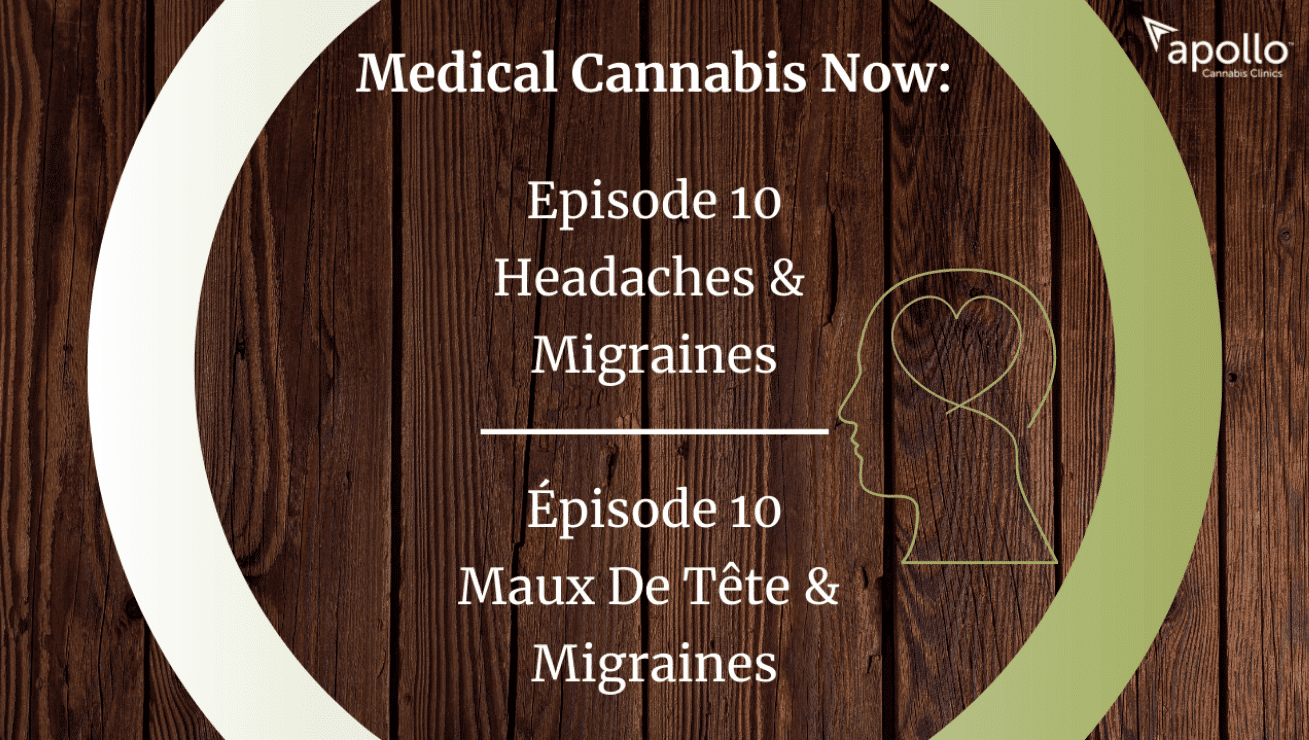
Episode 10: Migraines & Medical Cannabis
Welcome to the 10th episode in our Medical Cannabis Now series! This month, Arash Taghvai, MD., discusses a few different types of headaches, how medical cannabis can play a role, and he’s prepared a couple of case studies at the end alongside answering your questions. We’ll help you understand what causes headaches and what we often see in the clinics of patients looking for relief for not only migraines but co-existing conditions. Thank you to all those who did send questions in and please enjoy!
Migraine Types, Causes & Symptoms
This episode we cover 3 different types of headaches, the cluster headache, the tension headache, and the infamous migraines. One distinguishing factor for cluster headaches, is that they are unilateral (one side of the head). They also can present with what is known as periorbital pain – which is pain behind the eye – or Rhinorrhea which is a runny nose on the same side of the eye pain. Sometimes patients report lacrimation – which is tearing up in the eye that is in pain.
Cluster headaches can present at the same time every day. A patient may say that it happens every evening around 7-8 pm and lasts until I get to bed. There is a higher incidence in males and there is also an increase in incidences tied with those who have a history of smoking cigarettes. The treatment for cluster headaches is a class of medications known as the “triptans”; more specifically Sumatriptan. 100% oxygen is a treatment option that can help if a physician deems it a good option.
The next type of headache is a tension headache. Tension headaches are bilateral and sometimes have a bandlike distribution and are treated with NSAIDs. The final type are migraines. Migraines are distinct and have 2 phases to them, with some patients experiencing a migraine aura (a sensory disturbance).
There is vaso-dilation and vasoconstriction involved in all types of headaches but with migraines it’s more rapid and involves both. The initial phase of any migraine is the dilation phase. Patients will report that they have trouble with bright lights and trouble with loud sounds which is due to the increased blood flow to those organ systems. If you have a lot of blood going to the eye, it will cause photophobia; where light is going to be painful and can be referred to as an ocular migraine. If blood flow is increased to the ears, then everything is amplified, and the smallest or loudest noise can cause phonophobia (acoustic pain). If there is increased blood flow to the Oropharynx – there have been reports of dysgeusia which is just a fancy way of saying there are different tastes in your mouth. Patients sometimes report it is a metallic taste in their mouth, and then the headache sets in. After the initial vasodilation in a migraine, comes the vasoconstriction when most of the pain is present. Once the pain sets in, things that can help are time, a dark quiet room and rest.
How long do migraines last?
Cluster headaches are considered to be short duration. Although 3 hours is not short in duration, they are classified that way, because it can be as short as 15 minutes. If we look at the main difference between all these headaches, we can say that there is pain involved in all of them, but very few will go as long as a migraine which can be as long as 72 hours. If a patient ever suffers from more than 4 headaches a week, which equates to 16 headaches a month, they are considered a chronic patient. If we can use CBD or any Cannabis Based Medication, we can potentially take them out of the category of “Chronic” and put them back into the category of “episodic headaches”.
Migraine Symptom Relief
When it comes to patients at Apollo, we kind of see two categories.
The first is patients that come to us just for headaches. A patient may say “I have seen my family doctor, he has referred me to a neurologist, they gave me their treatment options for a migraine medication, and nothing has worked thus far. I am here today to see if there is anything else that can be done to help my migraines.” The second type of patient that we see come is for another primary reason and they find the benefit of headache relief. So we will hear “I have been battling osteoarthritis or fibromyalgia for many years and I wanted to try cannabis based medications.” Many come back and report “My pain scale has come far down from what it used to be, and for any given reason, my headaches are gone as well.” This is because the endocannabinoid system has receptors in the brain and the vascular system. If we look at the brain, there are both CB1 and CB2 receptors (both THC and CBD). A patient that uses CBD on a consistent basis has the potential to slow down the incidence or occurrence of headaches. A patient who uses CBD and a dose of THC may help a patient manage their pain when a headache is set in.
Cannabis & CBD for Migraine Relief
The main chemical component we use at Apollo is CBD. Understanding that it is a non-psychoactive component, it may be used regularly throughout the day and regular use has shown reduced incidence of headaches. It has anti-inflammatory properties, and may also help with the nausea that comes with migraines. While it has been documented to also help reduce anxiety and pain, the biggest takeaway for this topic is that it can potentially reduce the occurrence of headaches.
The second compound we use is THC. THC is the psychoactive component of cannabis, but it is very important to note that it is dose dependent. We understand what we do not want to feel and we stay beneath it. THC may further help with pain control and sleep assistance.
Sometimes patients will tell us “When I get a migraine there is really nothing I can do about it. I turn off the lights and cover my head with a pillow and rest. I need a day off, I need 12 hours of sleep.” THC may help these patients fall asleep, and when they wake up they are hopefully feeling better.
Forms of Medical Cannabis for Migraine & Headache Relief
The first forms of medical cannabis that may help patients include ingestibles: oils, softgels, and edibles. It is important to note that they all have the same metabolism process required from the body. The second method is inhalation which can be done with dry cannabis flower in a dry herb vaporizer, or with the new pre-filled vaporizers (Both Health Canada approved). The difference between ingestion and inhalation comes down to time. Ingesting takes about 1 – 2 hours to take effect, whereas inhalation is almost immediate. Many patients will reserve vaporizing for breakthrough pain, or an unannounced headache.
Are There Studies Involving Migraines & Medical Cannabis?
Multiple studies have been conducted on the use of Cannabis-based medications and headaches, and some of the initial numbers are quite promising. In one study, over 80% of patients who used medical cannabis stated that it helped with the severity of their headaches and over 50% stated it helped reduce the incidence of headaches.
Question: Does cannabis interact with the family of triptan medications.
Answer: No it does not. They use different pathways of metabolism and they do not affect each other. If 2 drugs use the same pathway it can cause some traffic and that’s how medications can interact, but in this particular case they do not.
Question: If I feel a migraine coming on, what form of cannabis can I take to combat it in a timely manner?
Answer: This question can be answered in 2 different ways; first: modern medicine, and then medical cannabis. The triptan class of medications can help with migraines and other headaches. The general advice from physicians is that the minute you feel your headache coming on, take your medication. Hopefully it will be absorbed, metabolized, and get to those receptors in time to stop that headache, which is generally why the triptan class of medications aren’t often successful. The advantage we have with medical cannabis is that it can be inhaled. Patients are now able to inhale a CBD strain for immediate relief.
We hope you enjoy the video, and learned something along the way. Please send any questions or feedback you may have to Marketing@apolloresearch.ca! We love hearing from you.
—————
Apollo Cannabis Clinics offers you a free educational video series where we dive into hot topics in the medical cannabis world today.
We host a new episode each month, so make sure to follow us now and tune in! In case you missed our past videos, we are pleased to share them with you here.
If you have a more personal or specific medical question, we encourage you to book a free appointment with one of our Health Care Practitioners through a contactless, virtual appointment by calling toll-free at 1-877-560-9195 or email booking@apolloresearch.ca.
While we strive to best answer your questions, we do encourage any personal medical advice to be taken from a medical professional as this is personalized medicine, tailored to you.

